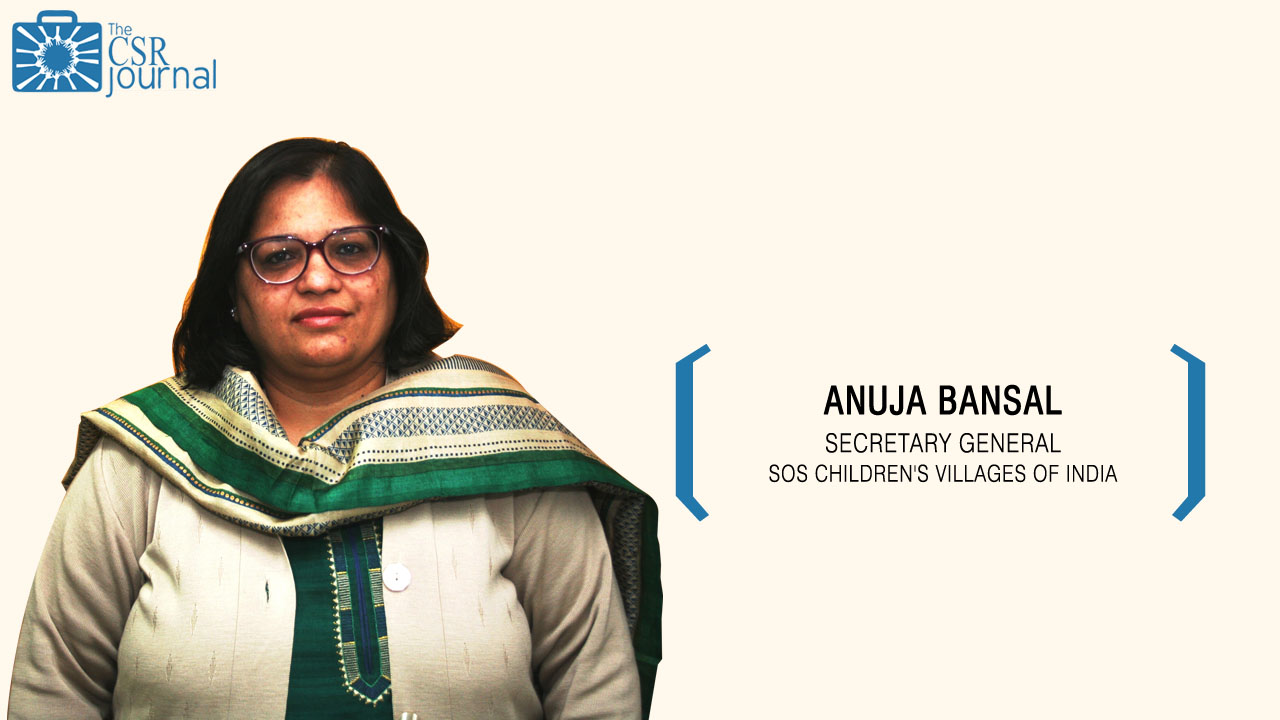One person can make a difference. Working together we make lasting changes, believes Anuja Bansal. As Secretary General of SOS Children’s Villages of India, her role is to lead the organisation in the strategic direction they have envisaged for themselves by 2020 and 2030, with the support and partnership of all stakeholders.
With over five decades of experience in providing committed child care and service to once parentless and abandoned children, SOS Children’s Villages of India is the flagbearer in the country in providing group foster care. It is an independent non-governmental organisation, providing family-like care to children deprived of parental care and the support of a family.
It is one of the first NGOs to be accredited by CRISIL for “Strong delivery capability and Highest Financial proficiency”. The brand is also rated by TRACE for anti-bribery and anti-corruption practices and was the first NGO in the sector to be awarded the “Super Brand” status.
“We are a large, self-implementing organisation, with over 1700 employees and pan India presence at 32 locations in 22 states. Over 26,000 children are receiving holistic care, love and protection through two flagship programmes; Family Like Care (FLC) and Family Strengthening Programme (FSP),” says Ms. Bansal.
SOS India raises about 50% of its funds from corporates through CSR funds. “We work with at least 60-70 corporates from various sectors across the country,” she says. However, her concern is that although there has been a substantial increase in the social activities incurred by the firms, the spending has mostly gone to the set priorities of the company rather than the democratically determined priorities. For instance, combating various diseases and promotion of education accounted for 44% of the total CSR expenditure last year while reducing child mortality received no funding and eradicating extreme hunger and poverty received only 6% of the total CSR expenditure.
Excerpts from her exclusive interview with The CSR Journal:
Has the 2% mandate in the Companies Act, 2013 been good news for non-profits?
Both the CRISIL and Prime Database analyses show that only a little over half (57%) of the companies complied with the 2% stipulation.
The underspending also means that if NGOs had expected a funding nirvana from CSR, it is not yet in sight. Though most companies look for either NGOs or government to partner with, the amounts going to them are far less than what were expected; and they do not compensate for the loss of declining foreign funds or government grants.
Though large NGOs have seen a spike in donations from companies, the grants given have not been as large as expected, nor transformational. They have not led to scale in the operations and impact of NGOs; nor have they led to policy changes, or to the strengthening of the development sector as a whole.
Where do you see gaps in CSR implementation?
Fear that the companies would find their way to avoid shelling out money for CSR activities has appeared to be well-founded. A survey by accountancy firm KPMG found that 52 of the country’s largest 100 companies failed to spend the required 2% last year.
According to the KPMG Report, geographic bias with respect to the company’s funding of CSR activities is also prevalent, as firms tend to fund those projects that are closer to where they are based. These result in industrialized areas getting preference over the poorer and underdeveloped areas that are truly in need of some development and aid.
Even though there has been a substantial increase in the social activities incurred by the firms, the spending has mostly gone to the set priorities of the company rather than the democratically determined priorities.
Of the nine different schedules prescribed by The Companies Act, 2013, two schedules: combating various diseases and promotion of education accounted for 44% of the total CSR expenditure while reducing child mortality received no funding and eradicating extreme hunger and poverty received only 6% of the total CSR expenditure.
How did SOS Children’s Villages get its name?
Dr. Hermann Gmeiner, a child welfare worker, initiated SOS Children’s Villages to help parentless children after the world war. The organization was registered in Austria in 1949.
With the generous support of donors, child sponsors, partners and friends, Gmeiner’s vision of providing loving care in a family like environment for children without parental care, and of helping families stay together so they can care for their children, has grown steadily over seven decades and is active in 135 countries and territories around the world.
Out of this, SOS India has the largest reach with 32 projects in 22 states providing direct care to over 7,000 once parentless children annually under our Group Foster Care model.
[Here’s what Hollywood actor Christian Bale had to say about SOS India on his visit to India]


